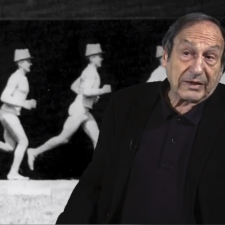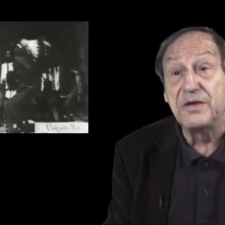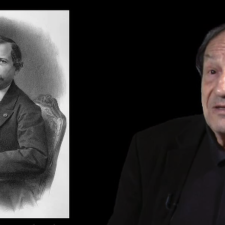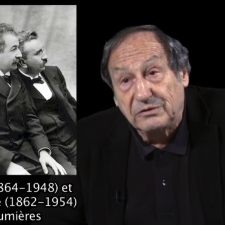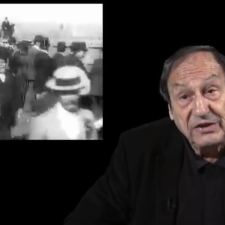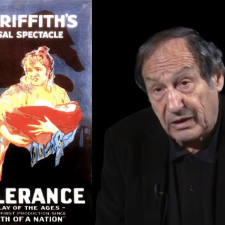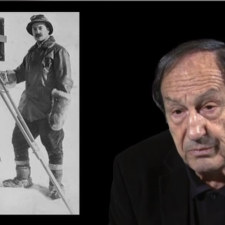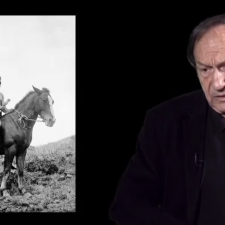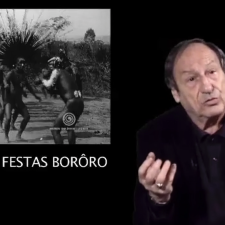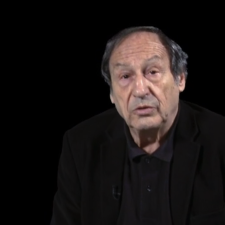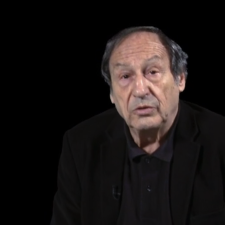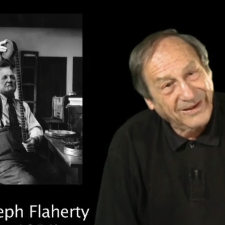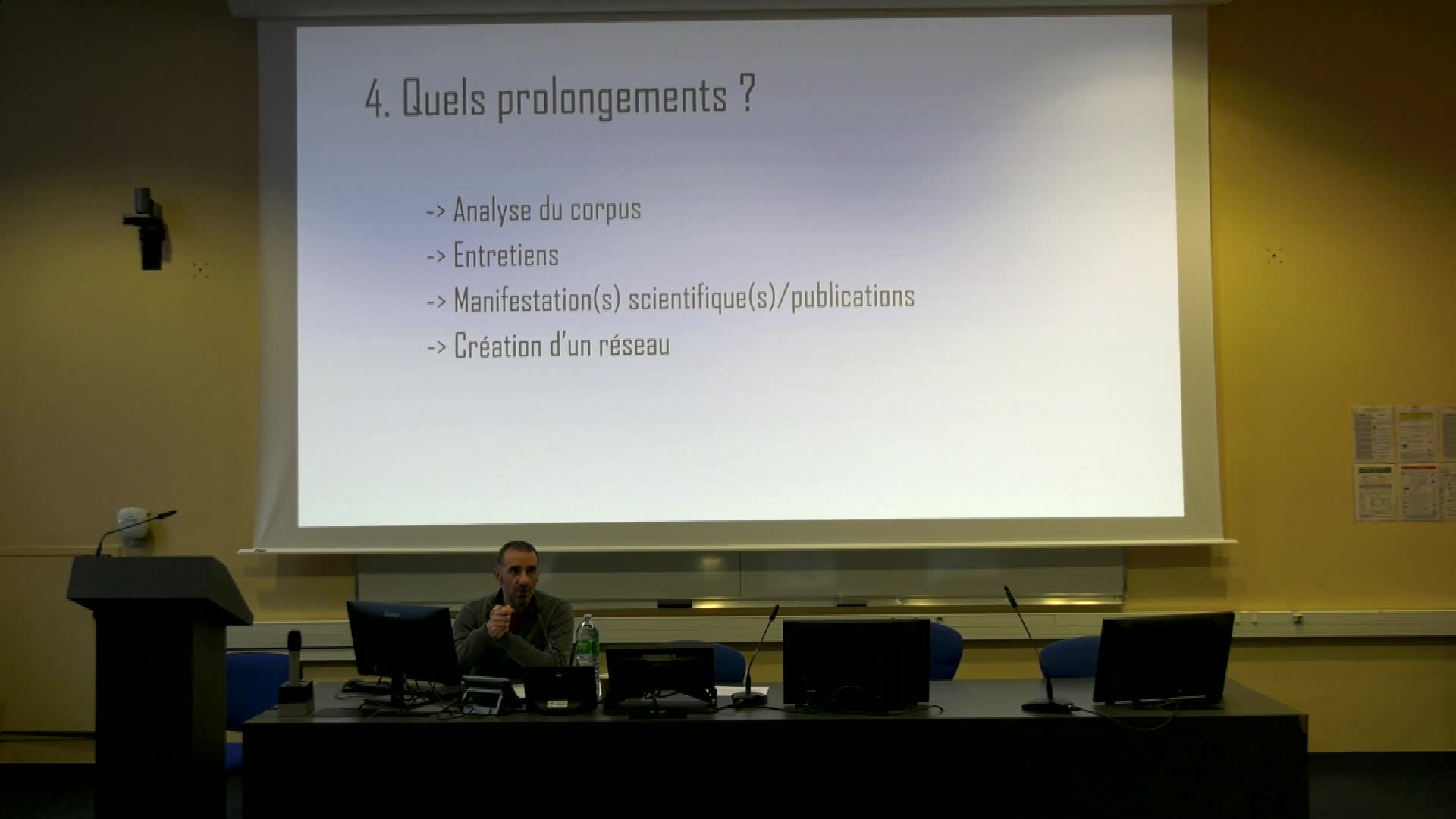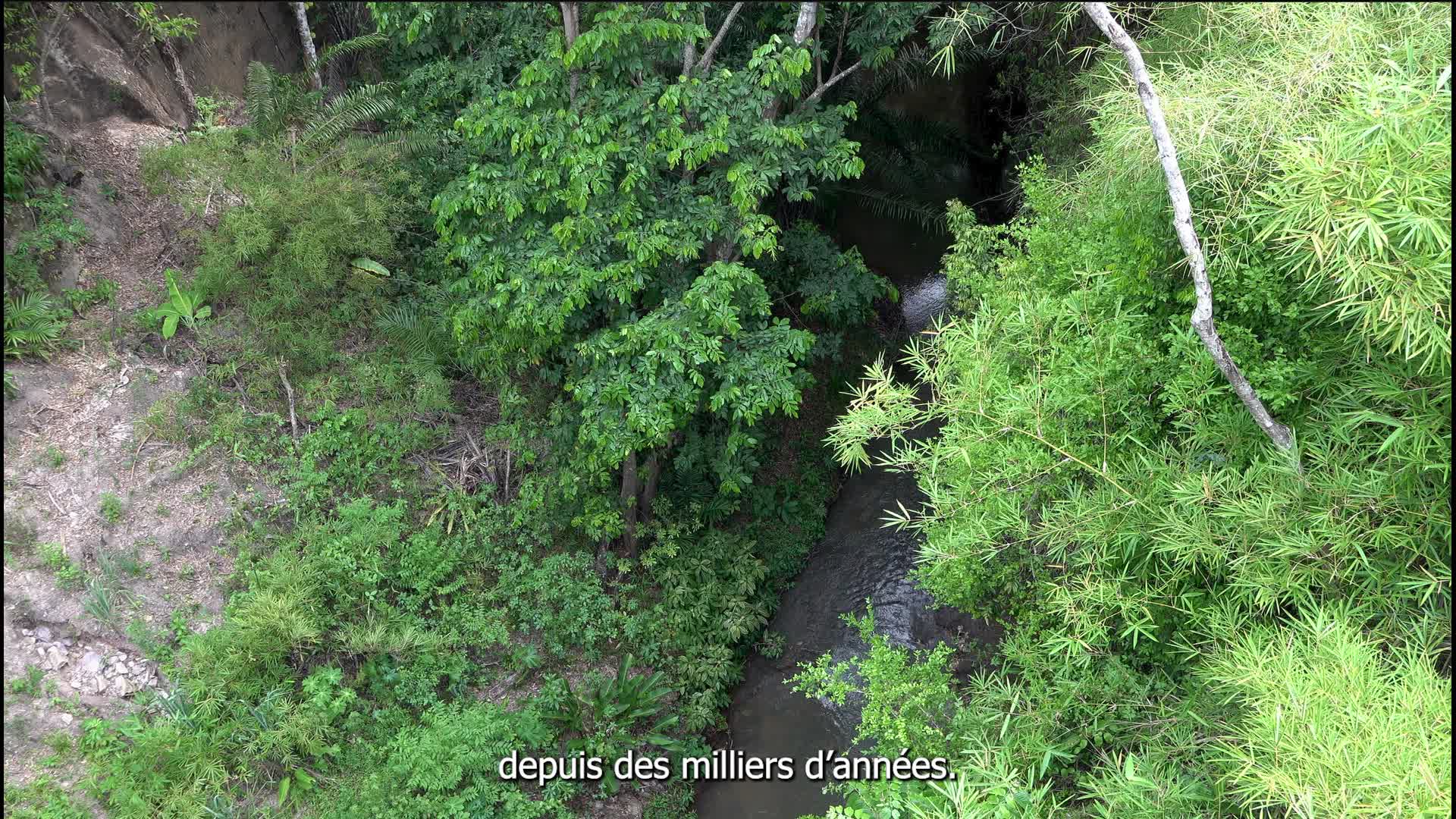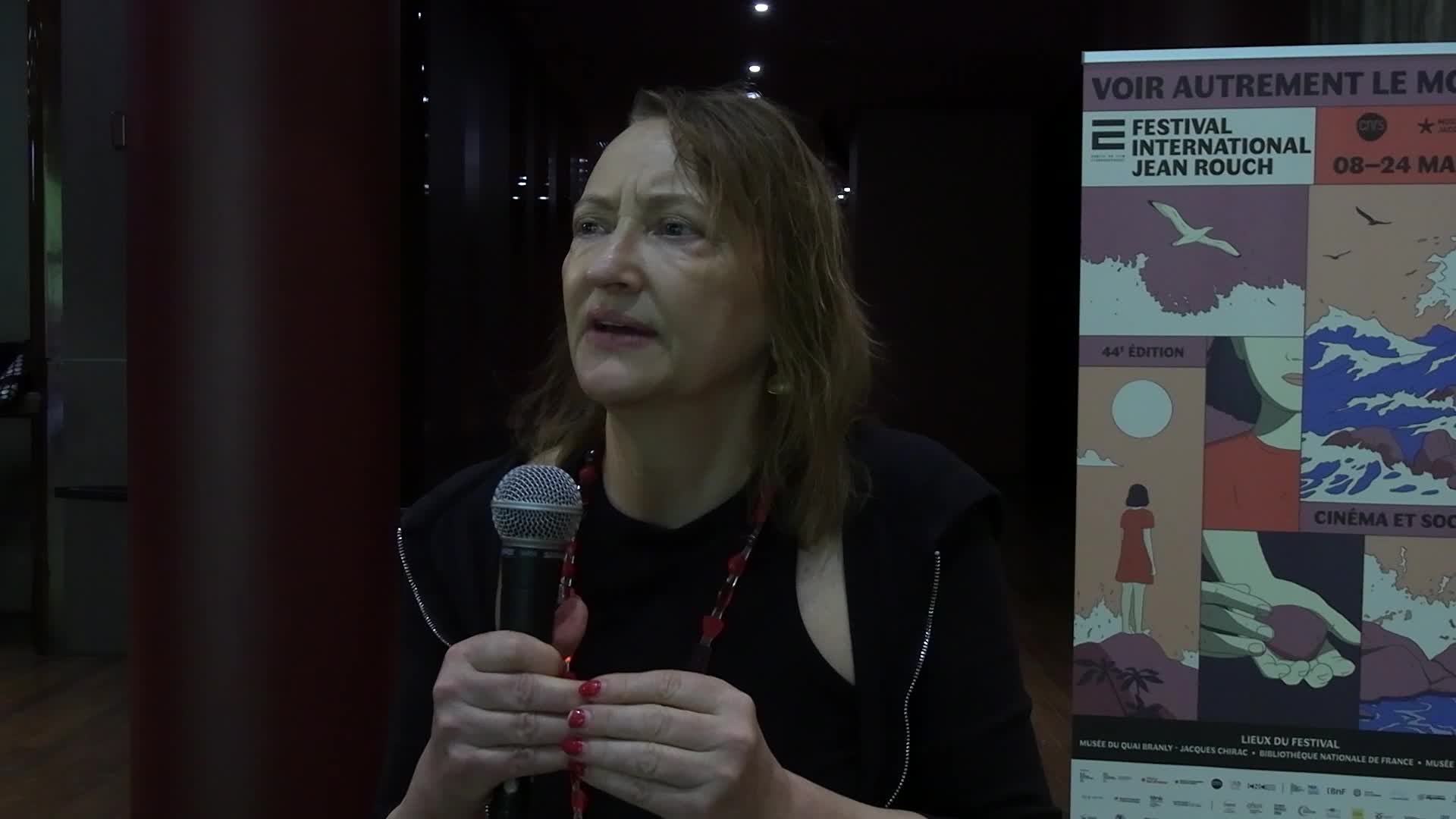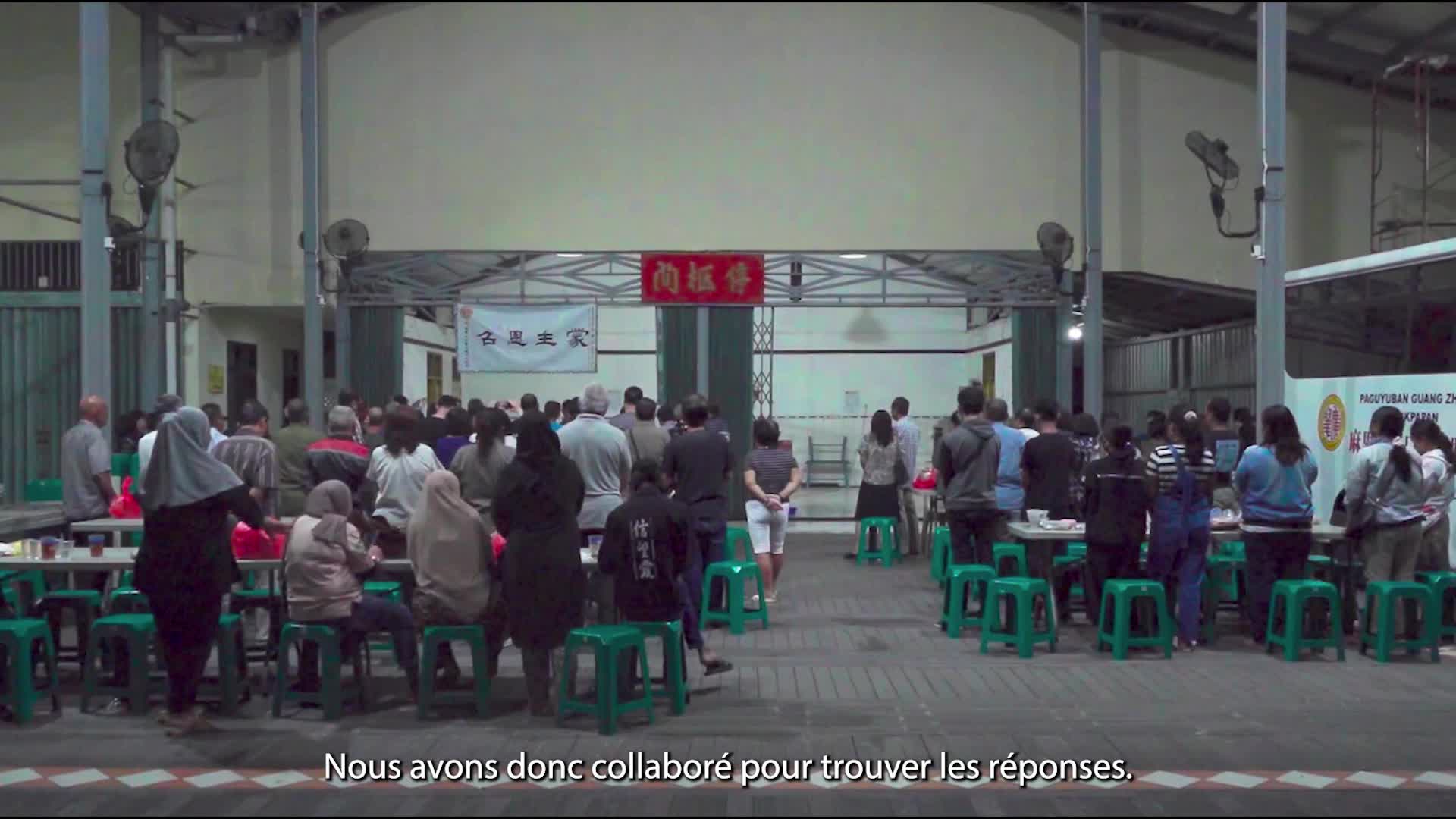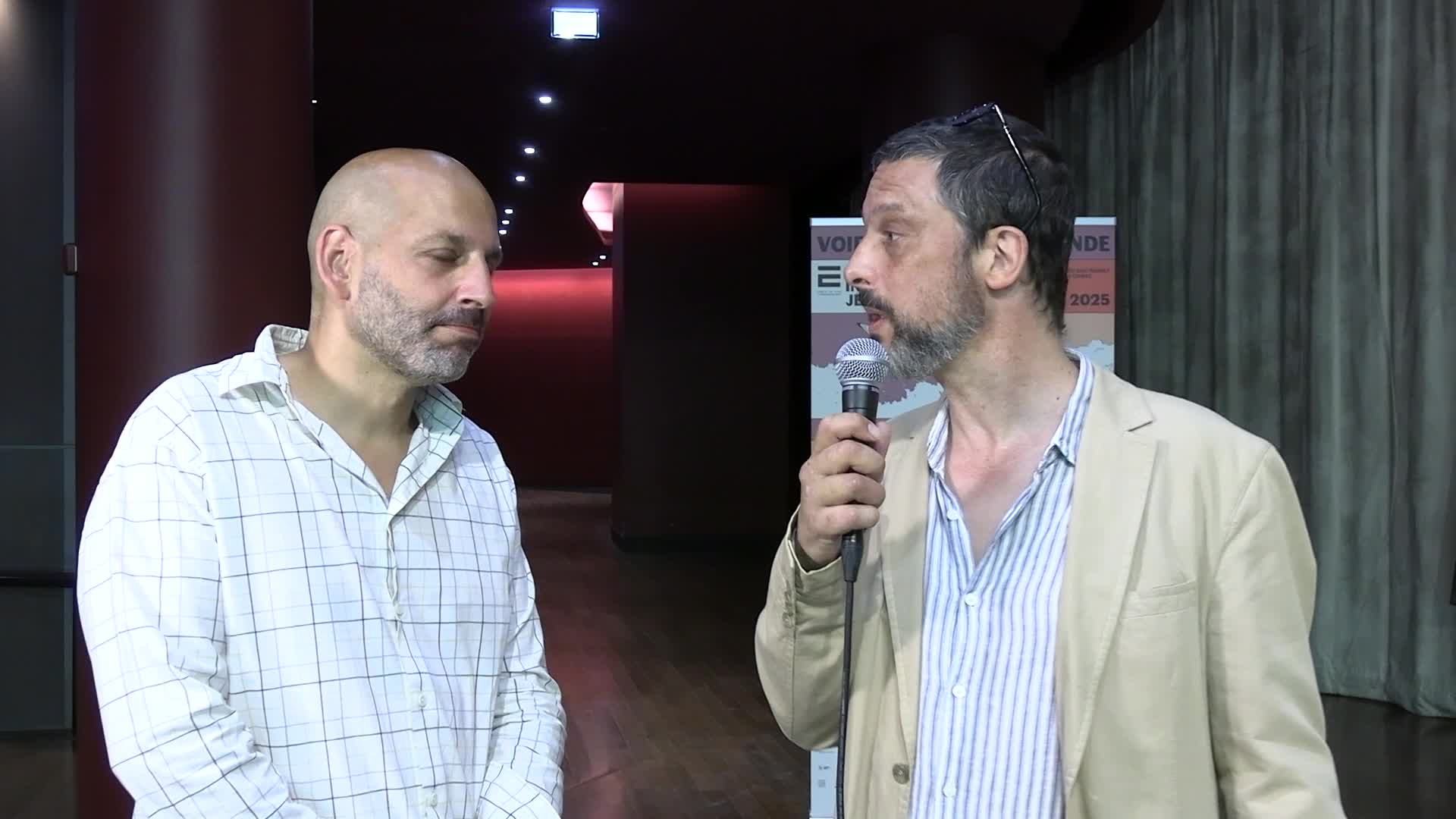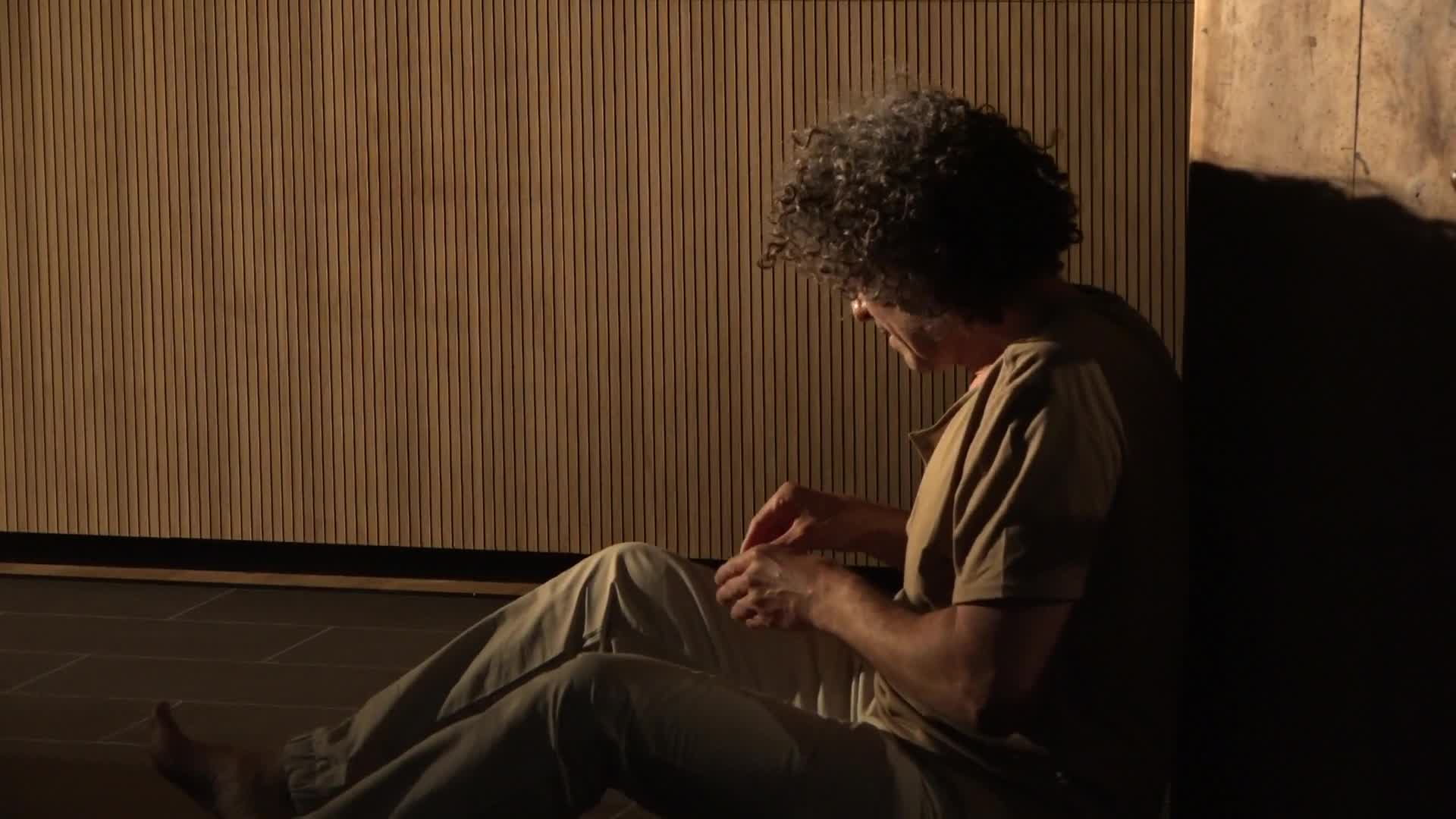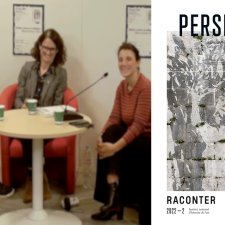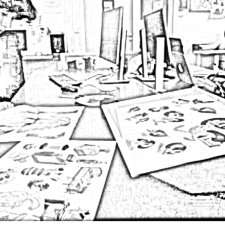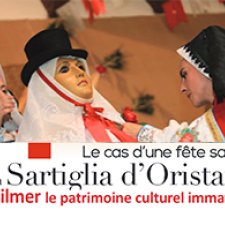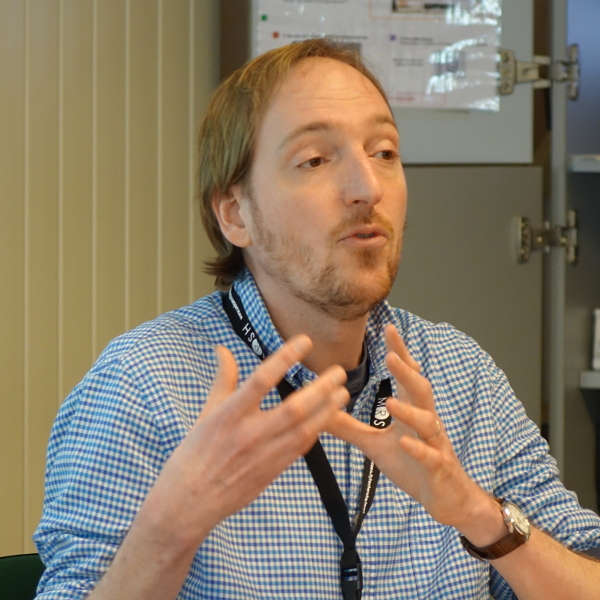Chapitres
- a) A.C. Haddon 02'35"
- b) Walter Baldwin Spencer00'51"
- c) Rudolf Pöch 02'56"
- d) Albert Kahn et Les archives de la planète03'56"
Notice
Leçon 1 - Pour la conquête du monde, Chapitre 3 : Les premiers films ethnographiques de terrain. (English and Portuguese subtitles)
- document 1 document 2 document 3
- niveau 1 niveau 2 niveau 3
Descriptif
Fr : Dès son départ, le cinéma tente de saisir ce qui est l’objet même de l’ethnologie : les pratiques de l’être humain dans les relations qu’il établit et qu’il énonce avec ses semblables et avec l’environnement qui le situe et dont il dispose. Cependant la prise organisée d’images vise également à percevoir sinon marquer les frontières qui distinguent l’humanité de la nature à laquelle cependant l’être humain appartient tout en ne sachant pas toujours la place qu’il y occupe. Identification et distinction, telles sont les opérations constamment à l’oeuvre et dont on peut espérer qu’aucune jamais ne prendra le pas sur l’autre, leur balancement garantissant une vraie dynamique d’existence, de découverte, d’invention, de réalisation, un espace d’exercice de ce qui serait la liberté. A travers ces opérations s’élabore un constituant essentiels à tout récit, qu’il soit cinématographique ou narration de l’expérience ethnologique : le personnage filmé ou la personne dans son autochtonie anthropologique. Il est construit d’une part dans le cours d’un processus de caractérisation et d’autre part à travers une opération distinctive d’identification par rapport aux autre figures de compréhension et dans le cadre d’une mise en situation relative. Dans notre parcours nous suivrons les traces de ce personnage, autant dans le cinéma qu’en anthropologie, cherchant à reconnaître les différents moyens mis en œuvre pour son identification et sa qualification.
Eng: Since its beginnings, cinema has tried to grasp what is the very object of ethnology: the practices of human beings in the relationships they establish and express with their fellow human beings and with the environment that surrounds them. However, the organized capture of images also aims to understand, if not mark, the limits that distinguish humanity from nature, to which, however, the human being belongs, without not always knowing the place he occupies there. Identification and distinction, such are the operations in constant activity and from which we can expect that none will overlap the other, their balance guaranteeing a real dynamic of existence, discovery, invention, realization, a space for the exercise of what would be freedom. Through these operations, an essential constituent of any narrative, whether cinematographic or ethnological experience, is elaborated: the filmed character or the person in his/her anthropological autochthony. It is constructed, on the one hand, in the course of a characterization process and, on the other hand, through a distinct identification operation in relation to other figures of understanding and in the context of a relative situation. In our journey we will follow the footsteps of this character, both in cinema and in anthropology, seeking to recognize the different means implemented for his identification and qualification.
Intervention / Responsable scientifique
Thème
Documentation
Bibliographie et filmographie
Références bibliographiques générales
Boukala M., Le dispositif cinématographique, un processus pour (re)penser l'anthropologie, Téraèdre, Paris, 2009.
Colleyn J.P., Le regard documentaire, Centre georges Pompidou, Paris, 1993.
De France C. , L’anthropologie filmique : une genèse difficile mais prometteuse, Du film ethnographique à l’anthropologie filmique, Editions des archives contemporaines, 1994.
Gardies A., Le réel filmique, Hachette, Paris, 1993.
Laplantine F., La description ethnographique, Armand Colin, 2005.
Lioult J.L., À l'enseigne du réel, penser le documentaire, PUP, 2004.
MacDougall D., Transcultural Cinema, Princeton, New Jersey, Pinceton University press, 1998.
Niney J.F., Le documentaire et ses faux-semblants, Klincksieck, Paris, 2009.
Piault M.H., Anthropologie et Cinéma. Passage à l'image, passage par l'image, Paris, Téraèdre 2008 (1ère édition Nathan 2000).
Filmographie
Alfred Cort Haddon, Mer Island Ceremonial Dance, 1898, Extrait de la "Cambridge University Expedition to Torres Straits"
Rudolph Pöch, Buschman spricht in den Phonographen, 1908, 3mn, 16mm sound, Film Archive Austria
Opérateur Camille Sauvageot, Les Archives de la Planète d'Albert Kahn, 1926, 3mn43s.
Liens
- A journey through Aboriginal Australia : Le site web du Musée Victoria et le projet de Spencer & Gillen : A journey through Aboriginal Australia
- Biographie de Spencer Baldwin
- Biographie de Alfred Curt Haddon : L'invention du terrain anthropologique par Anita Herle La recherche
- KINETOSCOPE page 84
Dans la même collection
-
Leçon 1 - Pour la conquête du monde, Chapitre 1 : Naissance de l'anthropologie et du cinéma (Englis…
PiaultMarc-HenriLa conquête politique et scientifique du monde. Naissance et développement du cinéma et de l'anthropologie à partir de la fin du XIXème siècle. Postures scientifiques d'exploration du monde
-
Leçon 1 - Pour la conquête du monde, Chapitre 2 : La rencontre du Cinéma et de l'Anthropologie (Eng…
PiaultMarc-HenriAnthropologie et Cinéma. La conquête politique et scientifique du monde. Naissance et développement du cinéma et de l'anthropologie à partir de la fin du XIXè siècle. Postures scientifiques d
Avec les mêmes intervenants et intervenantes
-
Leçon 1 - Pour la conquête du monde, Chapitre 1 : Naissance de l'anthropologie et du cinéma (Englis…
PiaultMarc-HenriLa conquête politique et scientifique du monde. Naissance et développement du cinéma et de l'anthropologie à partir de la fin du XIXème siècle. Postures scientifiques d'exploration du monde
-
Leçon 1 - Pour la conquête du monde, Chapitre 2 : La rencontre du Cinéma et de l'Anthropologie (Eng…
PiaultMarc-HenriAnthropologie et Cinéma. La conquête politique et scientifique du monde. Naissance et développement du cinéma et de l'anthropologie à partir de la fin du XIXè siècle. Postures scientifiques d
-
Leçon 2 - Vers un nouveau langage, chapitre 1 : L'émergence d'un nouveau langage (English and Portu…
PiaultMarc-HenriAnthropologie et Cinéma Postures scientifiques d'exploration du monde (collecte, identification, appropriation) et d'instrumentalisation à l'origine de l'émergence d'un langage du cinéma :
-
Leçon 2 - Vers un nouveau langage, chapitre 2 : L'ethnographie devient une science (English and Por…
PiaultMarc-HenriPostures scientifiques d'exploration du monde (collecte, identification, appropriation) et d'instrumentalisation à l'origine de l'émergence d'un langage du cinéma : Scientific postures of
-
Leçon 2 - Vers un nouveau langage, chapitre 3 : L'invention de la mise en scène documentaire (Engli…
PiaultMarc-HenriPostures scientifiques d'exploration du monde (collecte, identification, appropriation) et d'instrumentalisation à l'origine de l'émergence d'un langage du cinéma : Scientific postures of
-
Leçon 2 - Vers un nouveau langage, chapitre 4 : A partir du documentaire, l'invention d'un langage …
PiaultMarc-HenriAnthropologie et Cinéma Postures scientifiques d'exploration du monde (collecte, identification, appropriation) et d'instrumentalisation à l'origine de l'émergence d'un langage du cinéma :
-
Leçon 2 - Vers un nouveau langage, chapitre 5 : Description, exploration, passage à l'imaginaire (…
PiaultMarc-HenriAnthropologie et Cinéma Postures scientifiques d'exploration du monde (collecte, identification, appropriation) et d'instrumentalisation à l'origine de l'émergence d'un langage du cinéma :
-
Leçon 2 - Vers un nouveau langage, chapitre 6 : Vers l'ethno fiction, Edward S. Curtis (English and…
PiaultMarc-HenriAnthropologie et Cinéma Postures scientifiques d'exploration du monde (collecte, identification, appropriation) et d'instrumentalisation à l'origine de l'émergence d'un langage du cinéma :
-
Leçon 2 - Vers un nouveau langage, chapitre 7 : Le premier film anthropologique (L. Thomaz Reis) (E…
PiaultMarc-HenriPostures scientifiques d'exploration du monde (collecte, identification, appropriation) et d'instrumentalisation à l'origine de l'émergence d'un langage du cinéma : Scientific postures of
-
Leçon 2 - Vers un nouveau langage, Chapitre 8 : L'intention filmique et l'invention du spectateur (…
PiaultMarc-HenriPostures scientifiques d'exploration du monde (collecte, identification, appropriation) et d'instrumentalisation à l'origine de l'émergence d'un langage du cinéma : Scientific postures of
-
Leçon 3 - Les Pères Fondateurs, Chapitre 1 : Construction de l'image et/ou démarche anthropologique…
PiaultMarc-HenriLes postures anthropologiques fondatrices à travers les positions idéologiques et les partis pris de réalisations issus des premières expériences du cinéma documentaire. The founding
-
Leçon 3 - Les pères fondateurs, chapitre 2 : Le cas Vertov (English and Portuguese subtitles)
PiaultMarc-HenriLes postures anthropologiques fondatrices à travers les positions idéologiques et les partis pris de réalisations issus des premières expériences du cinéma documentaire. The founding
Sur le même thème
-
AlcooUniv23 - L’alcoolisme à l’université en France. Une socio-histoire des années 1850 à nos jours
Le BrasStéphaneStéphane Le Bras, membre du CHEC, présente le projet AlcooUniv23.
-
Dans les pas des Maitres Fous (1955, Jean Rouch)
BuobBaptisteCette intervention s’est déroulée dans le cadre du colloque codirigé par Valérie Vignaux et Tania Vladova : « Recherche vs Création et inversement », LASLAR, UR4256, Université de Caen, Esadhar et
-
Mattijs van de Port parle de son film "Où puis je me perdre ?"
PortMattijs van deInterview de Mattijs van de Port pour son film "Où puis je me perdre ?" en compétition à la 44ème édition du Festival International Jean Rouch en 2025.
-
Caterina Pasqualino parle de son film "Mourir à Palerme"
PasqualinoCaterinaInterview de Caterina Pasqualino pour son film "Mourir à Palerme" en compétition à la 44ème édition du Festival International Jean Rouch en 2025.
-
Yuefei You parle de son film "What Do Ghosts Think?"
YouYuefeiInterview de Yuefei You, étudiante en anthropologie à l'université d'Amsterdam, pour son film "What Do Ghosts Think?" en compétition à la 44ème édition du Festival International Jean Rouch en 2025.
-
Emmanuel Grimaud et Stéphane Rennesson parlent de leur film "Stoned"
GrimaudEmmanuelRennessonStéphaneInterview d'Emmanuel Grimaud et Stéphane Rennesson pour leur film "Stoned" en compétition à la 44ème édition du Festival International Jean Rouch en 2025.
-
Le Roi ne meurt jamais / The King Never Dies
LamarquePierreDemeulenaereEliseSynopsis du film. Konso (Sud de l’Éthiopie), février 2005. Après avoir vécu de nombreuses années à Addis-Abeba, Gezagn Kala est rentré dans son pays natal, Konso, pour devenir le 20ème poqalla (chef
-
Montre-moi un monde où...
SchetritOlivierBenvenutoAndreaMeyyappanRameshEntre mai et juin 2023, l’artiste singapourien sourd, comédien, metteur en scène et enseignant de théâtre Ramesh Meyyappan et l’anthropologue et artiste sourd Olivier Schetrit ont travaillé sur un
-
Soirée de présentation de l'ouvrage "Perspective - Raconter - n° 2022 - 2"
PoilpréAnne-OrangeCaillatMarieHugounenqSarahLà où apparaît une image, qu’elle soit fixe ou animée, figurative, aniconique, matérielle ou mentale, surgissent une histoire et une manière d’en agencer le récit. L’image et l’objet d’art racontent
-
4.1: Un regard historique sur l'enseignement de l'animation dans le supérieur
RoffatSébastienMerijeauLucie4.1: Un regard historique sur l'enseignement de l'animation dans le supérieur
-
Patrimoine immatériel et cinéma / Nicolas Adell
AdellNicolasCette journée d’étude, interdisciplinaire, organisée par des ethnologues et des italianistes porte sur le patrimoine culturel immatériel. Au centre de la journée d'étude est prévue la projection en
-
"Atonement" by Joe Wright: (re)writing and adaptation
This paper proposes an analysis of Joe Wright’s 2007 film adaptation of Ian McEwan’s novel Atonement. In particular it will look at how one of the novel’s major theme of storytelling and what Alistair



